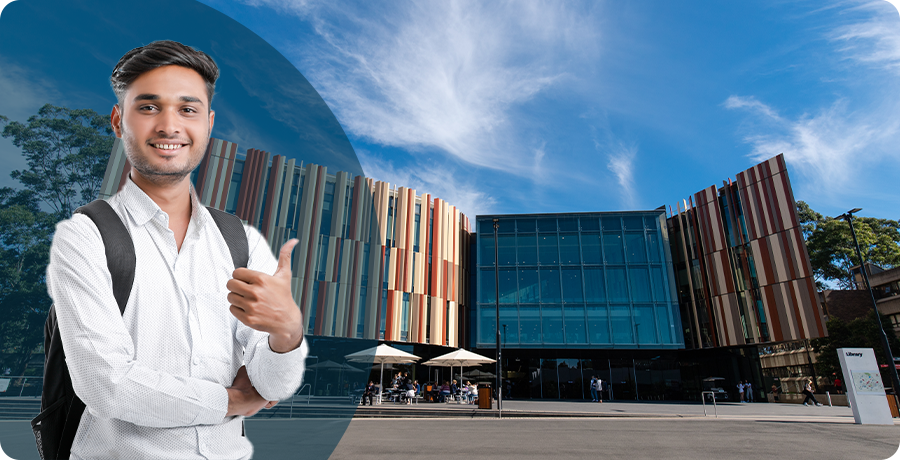Australia is one of the leading countries globally, advocated as a world-class educational destination. It offers thousands of international students the best quality education and job opportunities. The academic degree conferred by Australian universities is accepted globally by companies and recruiters.
Australian Education System – A Brief
Australia provides a well-structured educational program. The Australian educational pattern is similar in all its six states, which include Queensland, Victoria, New South Wales, Tasmania, South Australia, Western Australia, and its two territories, namely the Northern Territory and Australian Capital Territory. When looking for an opportunity study-abroad option, there are several reasons to select the Australian continent as your primary study destination. However, a thorough understanding of their educational system is essential before completing the formalities to study in Australia.
Join top courses abroad, connect with SI-UK
Planning to do higher studies in the country can help students gain a well-planned study-based curriculum to develop their skills in many directions. Students can enhance their talent in creativity, analytical thinking power, critical analysis, ethical understanding, and more. Before deciding to get a student loan to study abroad in Australia, it is best to know more about the distinctive features of the Australian educational system.
The Australian employment system is a continuation of the academic system. Employability is given due importance and implanted through the educational curriculum and pupil assessment process. Teachers often discuss in-depth with graduate and postgraduate students on their learning, academic knowledge, and how they can be related to their future employability.
Undergraduate and Postgraduate Programs in Australia
In Australia, higher education is referred to as the tertiary educational level. It will help students pursue undergraduate, graduate, or postgraduate programs at deemed universities. On completion, they will be honored with a bachelor's degree, master's degree, or doctoral degree certificate. For example, a doctoral degree certificate will be conferred upon successful completion of MBBS in Australia for Indian students. The degree holders can also pursue non-clinical PG courses or programs in Australia. An Australian course means an academic program in their educational system.
What is Vocational Education Training in Australia?
Formal and advanced education in the continent is divided into four main stages. It comprises early childhood education, primary stage of education, secondary stage of education, and tertiary stage of education. Australia is notably the 3rd most significant provider of education to foreign students. At the tertiary level, students are given vocational training and education in junior college (2 or 3-year vocational programs) and at certain polytechnic institutes. Education at these levels during the college and polytechnic institutes helps the students gain an industrial associate degree.
Vocational educational training, or VET, is offered through federal, state, and industrial partnerships. It is designed specially to provide students with job opportunities immediately after graduation. Irrespective of classroom practical learning or online teaching, hundreds of vocational courses offer on-the-job training for students. There are government-aided TAFE or Technical And Further Education institutes, plus numerous other community educational centers imparting vocational training. Students can also seek out private Registered Training Organizations or RTO.
VET skills and qualifications involve four levels for gaining certifications. They include certificates 1,2,3, and 4. Indian students studying abroad can also find diploma VET courses and advanced VET courses, which depend on study years, occupational skills, and level of experience gained through practical work.
How is the Australian Education System Different from Other Countries?
Australia provides both public as well as private education centers. Both options can be explored. The public schools are government-funded centers. The public schools offer funding on a per-student basis wherein the full cost of the educational fees is subsidized and made affordable. Students desiring economic options may prefer public educational centers.
The independent educational system depends on fundings via donations and student tuition fees. The private institutes also depend on government funds on a per-student basis. Unlike other countries, there is no difference in the top-quality of education or the experienced teaching faculty irrespective of a private or public school or institute.
Australia sets a different education pathway for all its students by introducing the Australian Qualifications Framework. The AQF is considered the backbone of the Australian educational system, well-designed and meticulously planned. This unique structure was adopted in the year 1995. The AQF provides valid certificates to students in the primary, secondary, and tertiary educational levels. It encompasses higher education, vocational, and other training courses (VET). It is administered by the Australian Department of Education, Skills, and Employment.
Some Unique Features of the Education System in Australia
- Multicultural Society: The continent has more than 700,000 foreign students. The schools and institutes offer simple and quickly accessible student-friendly supportive services. Australia's multicultural community also makes it a favorite study destination for international students. The rich, diverse culture encourages more and more students from foreign backgrounds to join their academic centers.
- Top-class Australian Universities: You can learn at some of Australia's world-renowned universities. The best-ranked and research-based Australian universities include the Australian National University, the University of Melbourne, the University of Sydney, Queensland University, Adelaide University, Western Australia, Monash University, and UNSW Sydney. The above-mentioned Go8 universities are ranked under the top 150 global universities in the list of best universities globally.
- Student-friendly Education System : With more than 22,000 study courses offered by 1,100 institutions, Australia stands among other top-ranking countries that offer higher education systems. The education pattern stresses the role of active student participation and engagement. Students are requested to get involved in the learning via discussions and debates. Surveys done in the past decade of Indian students studying abroad in Australia indicate that international students have reported great satisfaction in living, studying, and working in Australia.
- Advanced Courses: Students can choose from a wide range of courses. In 2019, the Australian education system offered 3000 plus scholarship awards and an equal number of short courses to potential applicants from more than 55 countries worldwide. With 15 Nobel laureates produced under their education system and almost 3 million international alumni spread across the globe, Australia is truly the most revered educational destination in the world.
- Emphasis on Practical Skills: The education focuses on practical skills and on-site learning. Most courses offer practical training and knowledge to prepare students for good job opportunities. Students learning vocational courses get ample training and hands-on experience before they complete their courses.
- Imparting Personalized Education: Teachers use advanced analytical tools to receive timely alerts to help students learn better. The students at risk of failure, getting stressed, or dropping out suddenly during their academic sessions are addressed quickly. All students are given equal access to learning equipment and materials. The administrators keep a strict vigil on students and see that none is lacking for these things.
- Focus on Graduate Outcomes: The university heads use strategic plans to highlight graduate employability. Students need to have the right knowledge, attributes, and reflective thinking abilities and identify their self-needs to gain a reputed career and contribute towards a better economy. The employability programs are comprehensive, focusing not just on on-campus job centers, but graduates are also provided with industry visits. These programs are meticulously planned to teach students to write an impressive resume and learn to master interview skills.








.png)


.png)
.png)